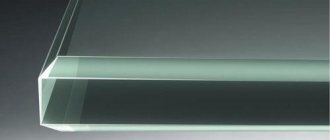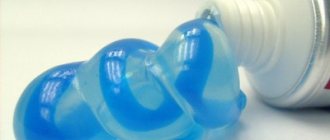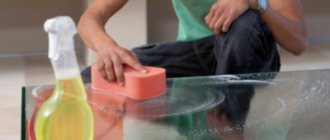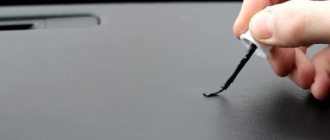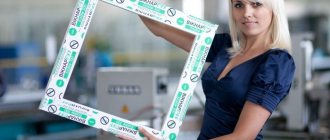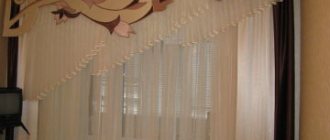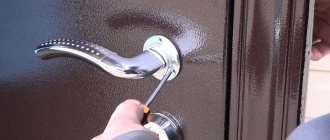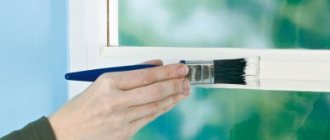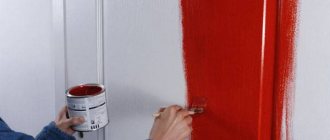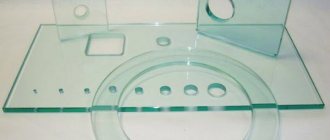Glass is particularly popular in industry. It is used to make handmade products for decorating home interiors, stained glass windows, aquarium bodies, and various household appliances. The only disadvantage of the material is its fragility, because it is susceptible to even the slightest damage and chips. Therefore, glass objects require attention and especially careful care. Learn how to remove scratches at home with tips and detailed videos.
How to get rid of scratches on glass at home
You can try to get rid of small and minor scratches at home yourself. We have selected several methods and told you how to use them.
Remember that all work must be done extremely carefully, because any scratch can turn into a crack or chip.
How to remove scratches from glass with toothpaste
Using toothpaste can remove minor scratches. Use the simplest, white one, without additional abrasive particles and dyes. Toothpaste with a gel texture will not work.
Procedure:
- Apply a small amount of paste to a cotton pad;;
- treat the glass surface with smooth circular movements;
- Remove any remaining paste with a dry paper towel.
- If necessary, repeat all steps 4-5 times.
Vegetable oil
This method will only mask minor scratches. Apply a couple of drops of vegetable oil to a cotton pad and rub into the surface of the glass. Then polish the glass with a dry paper towel.
Baking soda or talc
A paste is prepared from soda and water, quite thick, with the consistency of village sour cream. The amount of ingredients is taken based on the area of damage. The paste of baking soda and water should be completely homogeneous, without lumps.
A small amount of the prepared paste is applied to a finger wrapped in a piece of gauze and rubbed into the damaged area for 30 seconds. Remains of soda or talc are washed off with warm water, and the glass is wiped dry with a soft cloth.
Clear nail polish
Even deep scratches can be masked with clear nail polish.
Degrease the glass surface with acetone or nail polish remover. Apply clear varnish to the scratch using a brush and let dry.
Excess varnish can be removed with a cotton swab dipped in acetone or using a rubber spatula while the varnish is still wet.
Walnut
To mask scratches on glass, a walnut kernel is used. The damaged area is rubbed with a broken walnut, then polished with a soft cloth.
Dry mustard with vinegar
A thick paste is prepared from vinegar and dry mustard powder. Ready-made mustard is not suitable for these purposes. Using a soft cloth, apply the composition to the glass and polish. Remove any remaining mustard with a dry paper towel.
This method can be used if the above did not help.
Sandpaper
There are a lot of tips online on how to remove scratches from glass using sandpaper. But this method can hardly be called adequate. The surface of even the finest-grained sandpaper is too rough and rough and will cause an additional mass of micro-scratches and micro-cracks. WE DO NOT RECOMMEND!
Polishing glass using hand tools
To carry out this work, you will need a surface grinder or drill with an appropriate attachment. In addition, we will need to use grinding pastes with different abrasive properties.
Important! In order to remove a scratch, we will need to smooth its lower level with the rest of the surface, or remove sharp corners that change the parameters of light refraction and make the scratch visible. To do this, we first polish with a grinding paste with the largest particles that have the greatest abrasive properties. Then we gradually reduce the abrasive properties to minimum. At the final stage, polishing is carried out with cloth or felt without any paste. Of course, the abrasive paste is applied with periodic wetting with water. To do this, you can use a spray bottle.
How to remove scratches on glass using special means
If traditional methods do not help or you do not want to use them, then use special means to remove scratches on glass.
Polish
There are glass polishes on the market, some of which have the ability to remove scratches. Here is a brief description of the most popular products that have proven themselves to be of high quality.
| Doctor Wax | An effective product that has excellent polishing and cleaning properties. Perfectly polishes small scratches and removes turbidity from glass. |
| Sonax | Works well on small scratches, but is not suitable for deep damage. The product is only to be used in conjunction with a grinding machine. |
| Willson | An excellent product that removes scratches from glass objects. It is used manually, which is a huge plus in domestic conditions. The product is quite expensive and rarely found on sale. |
How to remove a scratch on glass with jewelry paste
Minor damage can be repaired using metal polishing paste.
A small amount of jewelry paste is applied to a cotton pad and rubbed gently into the damaged area until the scratch is reduced to a minimum.
Remains of jewelry paste can be removed with water and ammonia.
Anti-scratch for glass
The product can be found in auto stores. Anti-scratch from Turtle Wax is popular. The colorless paste masks small cracks, abrasions and scratches well. The anti-scratch agent will simultaneously fill the cracks and polish the surface, giving it a perfect shine.
Before treatment, the surface is cleaned and dried. Using a damp, soft microfiber cloth, rub the paste into the damaged area using smooth circular movements. Excess is removed after drying with a dry cloth or lint-free cloth.
Paste GOI
This universal product is suitable for polishing and grinding glass and metal products. The paste has 4 varieties, which differ in their graininess.
| #4 rough | removes the top layer of the surface, cleans large scratches and damage |
| No. 3 average | cleans out minor imperfections and scratches. After its application, the treated surface becomes dull. |
| No. 2 thin | the composition is used for polishing glass or metal |
| No. 1 thin | used for final sanding, gives the surface shine and shine |
GOI paste with composition No2 is ideal for removing scratches on glass and plastic products
How to remove scratches from glass with GOI paste:
- Apply a little paste to a piece of soft cloth;
- first rub the unwanted glass or metal surface to remove large particles;
- treat the damaged area with circular movements for 3-5 minutes;
- Remaining paste can be removed with a clean, dry cloth.
When working with any means, do not press too hard on the glass - it may burst!
Polishing glass with shampoo or soap
Shampoo, soap, dish soap, and other similar household chemicals can be used to gently polish lenses. Each of them contains microparticles that polish glass.
To get rid of defects, lubricate the lenses with one of the products and remove any remaining residue with a soft cloth. There is no need to rinse the lenses of your glasses under water: you should resort to this method of removing residual product only if it is otherwise impossible to remove it without streaks.
How to remove scratches from different objects
Glass objects are distinguished by their diversity. Glass repair for each of them has its own characteristics, which we will discuss in this section.
Glasses
Glasses are an item whose glass should not be repaired yourself. Any awkward and inept manipulations can lead to the appearance of cloudy spots and new micro-scratches. As a result of poor-quality repairs, the lenses will negatively affect the eyes.
Mirror
All of the described methods are suitable for removing scratches from mirrors. Before starting work, the extent of damage should be assessed. Small and minor scratches can be easily removed using folk remedies. More significant damage may require the use of professional remedies or calling a specialist.
Watch
You can polish the glass of a wristwatch using GOI paste. The process of using the paste is described in detail above.
If the watch is an expensive brand, it would be wiser to turn to professionals.
Plexiglas
Organic glass or acriplast is a composition that replaces ordinary glass and is very often found in everyday life. Scratches that occur during use of plexiglass products are removed using the same methods as scratches from regular glass.
Telephone
Minor scratches on the camera and phone display can be removed using any of the described methods. But you should avoid using baking soda and use talcum powder or baby powder instead.
How to remove a scratch on window glass
When removing scratches from double-glazed windows, you should give preference to compositions that do not contain large abrasive particles.
Minor damage to glass can be easily removed using optical polishes. They fill all the recesses and give the appearance of new glass.
The use of optical polishes lasts only until the first window cleaning. Then the procedure will need to be repeated.
How to remove scratches from a glass table
Glass countertops are usually made from tempered glass. The peculiarity of tempered glass is that it is shock-resistant, can withstand high temperatures and does not form sharp fragments when broken.
However, such glass is not resistant to scratches and small cracks. The reason for their occurrence is dust, placing dishes directly on the table surface, and cleaning with abrasive compounds.
To eliminate defects, you can use any of the proposed methods.
Removing scratches from aquarium glass
The peculiarity of removing scratches from aquarium glass is that it is not advisable to remove it from the inside, since it is unknown how the composition will affect the inhabitants of the aquarium.
It is not advisable to use glass grinding, as a lens effect may occur and it will distort the appearance of the aquarium.
The best option is to use polish. Its particles will remove a layer of several microns and restore the damaged surface.
We polish car windows with our own hands
Before starting the work process, it is recommended to wash the car using soap emulsion. The glass surface is wiped with a dry cloth. Movements should be smooth so as not to leave marks.
- To do this you will need polishing paste and a grinder.
- A small number of workers are evenly distributed to problem areas.
- After this, each layer is gently rubbed with sanding attachments so that the scratches become less noticeable.
Particular attention is paid to the windshield and side windows. The point is that they influence the process of liberation. Hazy areas reduce visibility and can provoke an emergency.
Preventing scratches
Some tips and recommendations so that you don’t have to get rid of scratches on glass in the future.
Do not use rags made of coarse fabrics when cleaning glass surfaces.
It is not recommended to clean glass with newspaper. Printed paper is typically hard and the ink contains rough particles that can scratch the glass.
Cleaning glass surfaces with abrasives results in new scratches. Use special glass cleaners.
Do not place glasses on the table with the lenses down; use a case.
The screens of smartphones, tablets and other gadgets can be protected with a special film, which can be easily replaced rather than removing scratches from the screen. When setting a glass table, use coasters and napkins - this will make it last longer.
What to do if your watch glass fogs up
In any case, the properties of air contain humidity, and watches are not assembled in a vacuum, so fogged glass is not such a rare occurrence, especially with a sharp temperature change. This cannot be called a defect, but if the glass on the watch sweats, it means there is some kind of defect.
There is a chance to contact a service center if the product’s warranty has not yet expired; otherwise, you can do some steps to fix the problem yourself:
- remove the back cover of the watch;
- place the watch near a heat source for some time (up to two days); if you can’t wait, use a hairdryer;
- cover with a napkin while drying to prevent dust from getting inside the product;
- do not open windows, do not use humidifiers - you need to try to minimize the humidity in the room;
- carefully place the lid in place without disturbing the design of the product (if there are any rubber bands or gaskets, they need to be installed back where they were).
It should be understood that the presence of moisture under the watch case can cause damage to parts and the watch mechanism. If fogging occurs rarely, for example, only when going outside in cold weather, then you should not worry and disassemble the product. Perspiration that appears at room temperature can be considered a cause for concern.
Please note that you can only worsen the situation: bring dust under the device body, tear the gasket, or increase fogging. Therefore, if you doubt your success, it is better to trust the professionals.
A little history
The first mention of a clock dates back to the end of the 16th century. Back then they were called bracelets. The first such product was presented to Queen Elizabeth 1 of England. This watch cost a fortune, as it was decorated with diamonds and a scattering of pearls.
For a very long time, only the upper strata of the population could afford them. Moreover, the product was worn exclusively by women until the beginning of the 20th century.
Then cheaper alloys began to be used to make watches. And the accessory has become ubiquitous. Every person could afford its cheap analogue. So, thanks to Robert Dudley, watches have not gone out of fashion for more than four centuries.
Damage removal options
There are two options to get rid of scratches - remove them yourself, or contact a specialist.
You will be able to deal with the problem yourself if the defects are minor. If the glass is severely damaged, then it will not be possible to do without the help of a specialist .
To understand how significant the defect is, you need to run your fingernail over it. If it falls into the recess and clings to the walls, the scratch is deep.
You will be able to remove the defect yourself if it appeared due to sand getting under the wipers or due to improper washing of the car. When scratches are the result of stones flying into the windshield or the result of too aggressive cleaning of ice, you will need the help of a specialist.
You need to be prepared for the fact that deep defects cannot be completely removed. Such scratches can be polished by approximately 60%. This improves the appearance of the car, but it is no longer possible to make the glass look like new.
